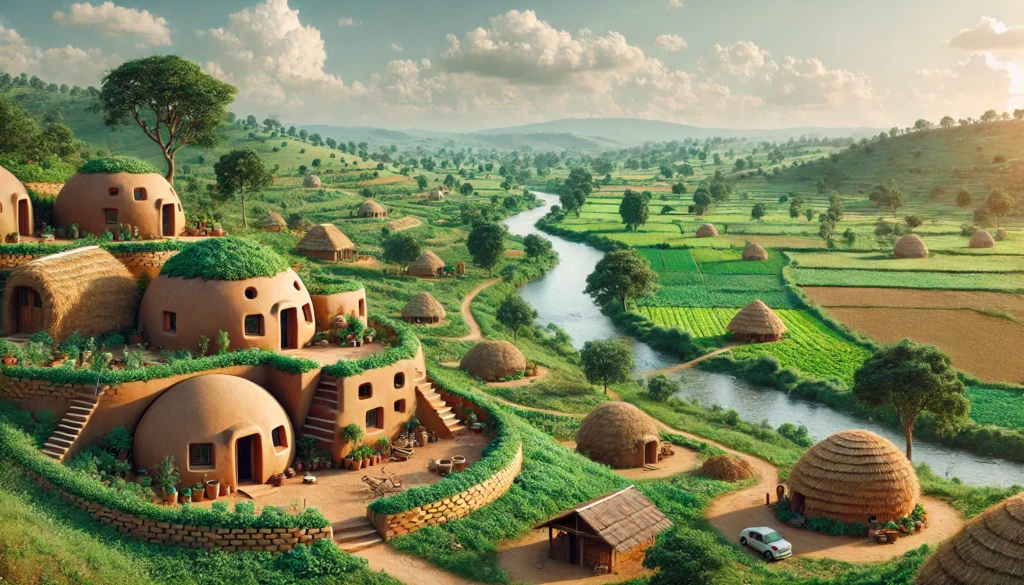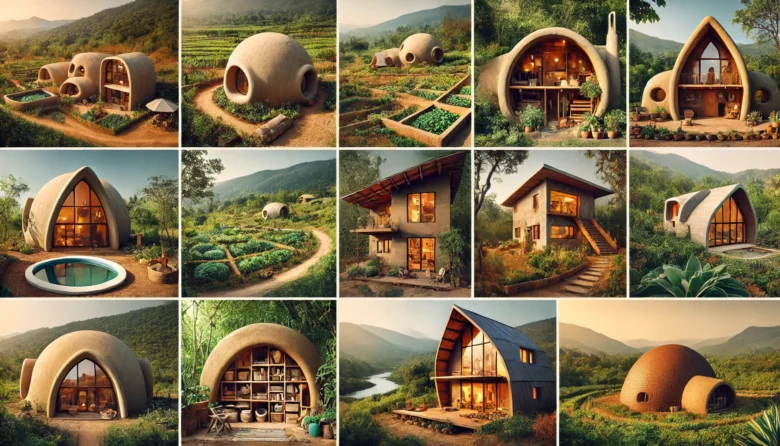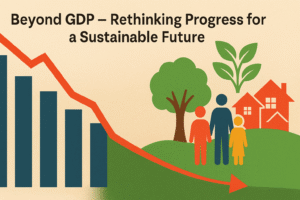The art of natural building stands out as a beacon of hope regarding sustainable living. In India, where environmental concerns are becoming increasingly critical, exploring eco-friendly construction methods like cob, straw bale, and earthships is timely and necessary. This blog will explore these fascinating techniques, highlighting how they can transform our home-building approach.
What is a Natural Building?
Natural building refers to construction methods prioritizing sustainability, local materials, and minimal environmental impact. Instead of relying on conventional, resource-intensive materials, natural building techniques use readily available, eco-friendly resources.
Cob Construction: An Age-Old Technique
Cob is one of the oldest natural building methods, dating back to prehistoric times. It involves a mixture of clay, sand, straw, and water, which creates a sturdy and durable building material.
In India, cob construction can be particularly beneficial due to the abundance of clay and straw in rural areas. Cob homes are known for their excellent thermal mass, which helps maintain comfortable indoor temperatures, a crucial factor in India’s varying climate conditions.
Benefits of Cob Construction:
Affordability: Cob uses inexpensive, locally sourced materials.
Energy Efficiency: Cob walls have natural insulating properties, reducing the need for artificial heating and cooling.
Aesthetic Appeal: Cob structures have a unique, rustic look that blends well with natural surroundings.

Straw Bale Building: Sustainable and Efficient
Straw bale construction involves using straw bales (the stalks left over after harvesting grains) as building blocks. These bales are stacked and then plastered with clay or lime.
Straw bale buildings are gaining popularity in India due to their excellent insulation properties and the availability of straw as a byproduct of agriculture. This method reduces waste and provides an efficient way to construct homes that stay cool in summer and warm in winter.
Advantages of Straw Bale Construction:
Insulation: Straw bales provide high levels of insulation, making homes energy-efficient.
Sustainability: Using agricultural byproducts reduces waste and promotes recycling.
Speed of Construction: Straw bale walls can be built quickly, saving time and labor costs.
Earthships: Innovative and Self-Sustaining Homes
Earthships are a revolutionary concept in sustainable building. They are designed to be self-sufficient and environmentally friendly. These homes are typically built using recycled materials like tires, bottles, and cans combined with natural materials such as earth.
With its pressing waste management issues and increasing energy demands, India can significantly benefit from the Earthship model. Earthships are designed to utilize natural resources for heating, cooling, and water management, making them an excellent choice for sustainable living.
Key Features of Earthships:
Self-Sustaining: Earthships generate their own electricity, manage their water, and produce food.
Recycling: These homes extensively use recycled materials, addressing waste management challenges.
Comfort: Earthships are designed to be thermally stable, providing comfortable living conditions year-round.
Implementing Natural Building Techniques in India
Integrating cob, straw bale, and earthship construction methods into the Indian context requires careful planning and adaptation to local conditions. However, these techniques offer significant advantages in sustainability, cost-effectiveness, and energy efficiency.
Steps to Get Started:
Education and Training: Promote workshops and training programs to educate people about natural building techniques.
Community Projects: Encourage community-led projects to demonstrate the viability and benefits of natural building.
Government Support: Advocate for policies and incentives that support sustainable construction practices.
Local Resources: Utilize locally available materials to reduce costs and environmental impact.
Real-Life Examples in India
Several successful projects in India have already adopted natural building techniques. For instance, the Auroville community in Tamil Nadu is renowned for its sustainable architecture, incorporating cob and earthship designs in many of its buildings. Similarly, organizations like Thannal Hand Sculpted Homes (based in Tamil Nadu) actively promote and teach natural building methods.
The Future of Natural Building in India
As India continues to urbanize, the need for sustainable building practices will only grow. Natural building offers a viable solution to many environmental and economic challenges associated with conventional construction. By embracing techniques like cob, straw bale, and earthships, we can create homes that are eco-friendly and in harmony with our natural surroundings.
Conclusion
The art of natural building, focusing on cob, straw bales, and earthships, presents an exciting opportunity for sustainable living in India. These methods are not only environmentally friendly but also cost-effective and energy-efficient. As more people become aware of the benefits, we can look forward to a future where natural building becomes a mainstream choice for housing.
Author’s Note
Thank you for taking the time to explore the natural building world with me. If you found this blog insightful, consider sharing it with others interested in sustainable living practices. Together, we can make a difference.
G.C., Ecosociosphere contributor.
References and Further Reading:
- Auroville Earth Institute
- Thannal Hand Sculpted Homes
- Solar Passive House Design | Kellett Design Group. https://kellettdesigngroup.com.au/house-designs/solar-passive-house-design/
- Yes, Manufactured Homes Can Have Solar Panels and They Do. https://buildgreennh.com/can-manufactured-homes-have-solar-panels/
- Effective Household Ingredients for Cleaning an Electric Kettle – SUSTEAS. https://susteas.com/blogs/news/effective-household-ingredients-for-cleaning-an-electric-kettle





Comments
Sustain the excellent work and producing in the group! http://www.hairstylesvip.com
A powerful share, I just given this onto a colleague who was doing slightly analysis on this. And he actually purchased me breakfast because I found it for him.. smile. So let me reword that: Thnx for the deal with! However yeah Thnkx for spending the time to debate this, I feel strongly about it and love reading extra on this topic. If possible, as you turn into experience, would you thoughts updating your weblog with more details? It is extremely useful for me. Large thumb up for this weblog post!
I抳e read a few just right stuff here. Definitely price bookmarking for revisiting. I surprise how much attempt you put to make such a fantastic informative site.